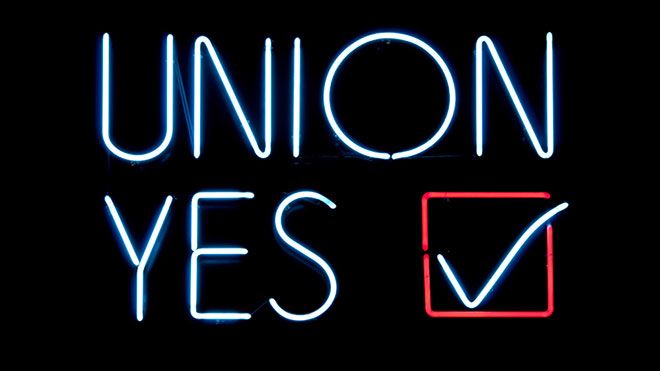8 surprising facts about trade union membership

You can read it yourself at the bottom of the page, but for those who don’t have time to read a 55 page report, here are eight of the headline figures.
1. There are 6.4 million trade union members in the UK
That’s 25% of all employees. It’s down from previous decades, but it’s still a huge number and makes trade unions Britain’s biggest social movement.
2. There are more and more private sector union members
For the fourth year in a row, the levels of union members in the private sector has increased. There are 200,000 more since 2010. The numbers are still far too low (14% of the private sector is unionised, compared to 54% for the public sector), but it’s great to see progress being made. It’s definitive proof of the value of organising.
3. Private sector union members earn 8% more than non-members
The average hourly wage for non-unionised workers in the private sector is £12.64. For union members, it’s £13.67. The “union premium” is even bigger for young workers from ages 16 -24, who earn 39% more than their non-unionised colleagues (that’s £7.84 to £10.18).
4. Public sector union members earn more too
21% more. Not all of that can be put down to being a union member, but it’s clear that a union does deliver on fairer, better pay for its members – in the private or public sector. Being a union member also gives you a say on what happens in your workplace.
5. Women who are in a union earn 30% more
The wages of women union members are on average 30% higher than those of non-unionised women.
6. And women make up the majority of union members
For the 13th year in a row, women are more likely to be trade union members than men. 55% of union members are women. This somewhat dispels the myth that unions have male-dominated memberships, especially considering that women form a minority of the workforce.
7. The highest rates of union membership are among black workers
The proportion of employees who are union members was highest among “Black or Black British” workers . Union are often described as “male and pale” – but the latest figures dispel that.
8. 40% of UK employees work in a workplace with a union, but only 25% are union members
The figures show that there are significant number of workers who we can reach easily because the already work where a union is present. This is a massive opportunity. The benefits for union members are clear, and the government’s attacks on trade unions only show that they still fear the impact of organised workers demanding fair pay, proper rights, and a decent society.
Let’s get organising!
Stay Updated
Want to hear about our latest news and blogs?
Sign up now to get it straight to your inbox
